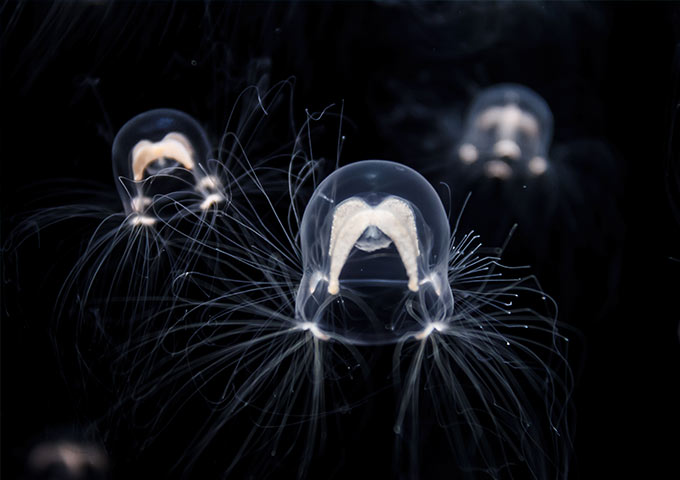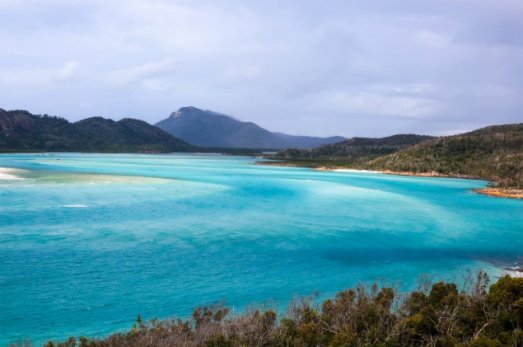Whales & Marine Life
Explore the vast array of wildlife in the Whitsundays Marine Park.
Whales
Whales visit the Whitsundays every year on their annual migration north from Antarctica during the winter months. Whale sightings are a privilege, and during your Yacht Charter it’s an exciting highlight to witness them at play. Humpback and pilot whales are the most common species sighted, and ‘Migaloo’ the white humpback whale has also been seen in the Whitsundays for the last few years. These magnificent creatures can be seen from June to September, and they are a common sight frolicking amongst the islands. The warm, calm, protected waters of the Whitsundays are a vitally important breeding ground and ideal nursery for the whales to give birth and rear their calves. It’s critical for their continued survival that their ‘nurseries’ are available to them, free from any harassment which may lead to calf mortality. We ask our charterers to comply with Safe Whale Watching Practices, in the Whitsunday Whale Protection Area for example, vessels can be no closer than 300m to a whale. Whales may approach a boat, in which case the skipper must turn the engines off immediately. The Great Barrier Reef Marine Park Authority (GBRMPA)’s website details all of the safe whale watching practices to protect this incredible species and ensure their ongoing survival. By following these responsible practices when you’re in the vicinity of whales and dolphins, you’re not only playing a big part in their conservation but you’re also providing a safe environment to watch them. Download the Whale Safe Guides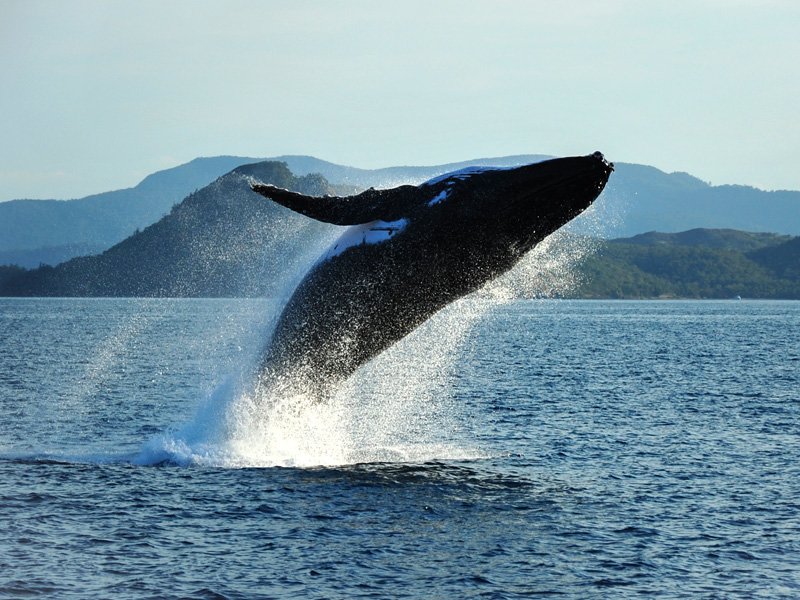
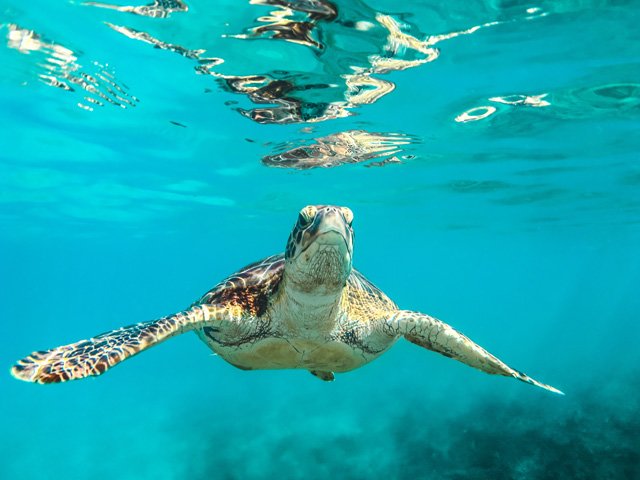
Turtles
We love our turtles and the Whitsunday Islands and Great Barrier Reef are turtle central, with six of the world’s seven marine turtle species cruising through its tropical waters. Green, hawksbill and loggerhead sea turtles are the most commonly sighted species here. Some females are marathon swimmers, travelling from as far afield as Papua New Guinea, Indonesia and New Caledonia.Rays
There are 35 species of rays in the Great Barrier Reef. They are broad, flat fishes that are closely related to sharks, with thick fleshy skin and skeletons made of cartilage. Many have dangerous barbs which they will use in self-defence and can cause major damage when removed, or leave toxins behind. Fatal stings are rare since the stingray’s venom isn’t usually deadly unless delivered to the chest or abdominal area. Fortunately, they are not an aggressive species and will stick to the ocean floor or retreat is disturbed. They are easily spotted when visiting the clear waters of Whitehaven Beach; keep an eye out for their tails as they usually have their whole bodies buried except for their eyes!Manta Ray
The manta ray is one of the most unique encounters to have while visiting the Great Barrier Reef. Large, elegant and curious, manta rays often come into contacts with humans as they often come very close to snorkelers and divers as well as moored boats. They can grow as large at 7.6m across, and luckily, are of no threat to humans as at all as they only feed on plankton and have no barbs. These gentle giants often sit around the surface and are amazing to encounter.Blue Spotted Stingray
Easily defined by bright blue and green spots on its dark green back, the blue spotted stingray can grow up to 47cm and feeds on foods like shrimp, crabs and worms. At the end of their tail they have two toxic barbs that they use when they feel threatened or when hunting. This usually only happens to people when they step on the stingrays, and then get stung in the feet or ankles.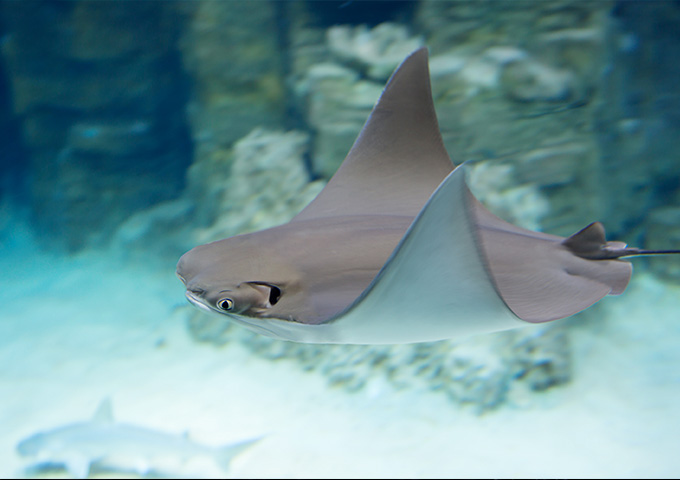
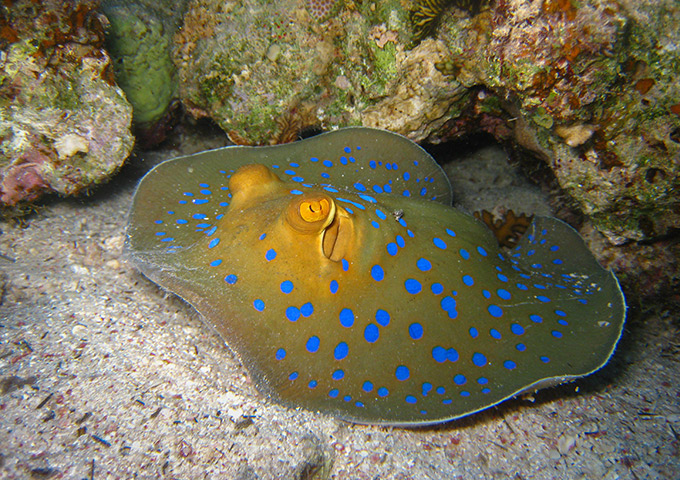
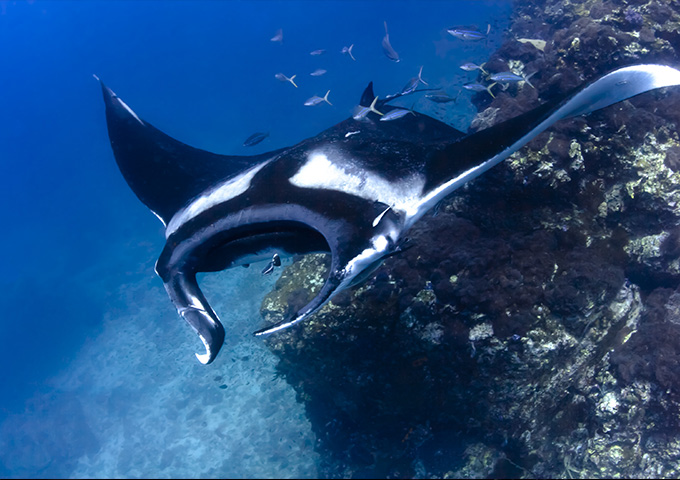
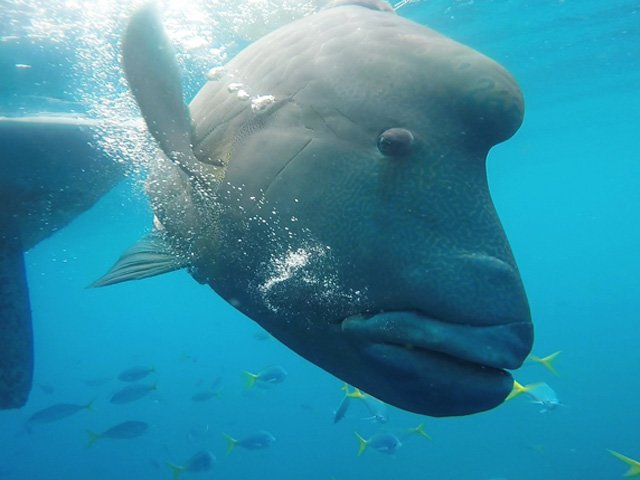
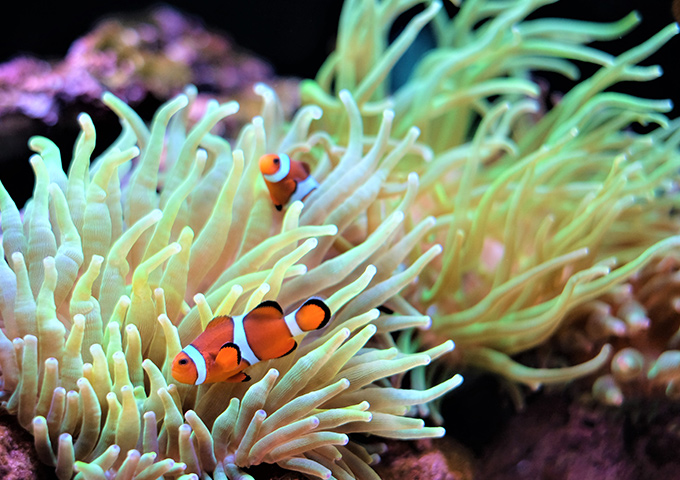
Fish
The distinctive maori wrasse has thick fleshy lips and such a prominent bump on its forehead that it’s sometimes known as a humphead wrasse. The maori wrasse is a curious fish that will approach your boat, and if snorkelling or diving … don’t be surprised if you find one following you around like a faithful friend. Growing to more than two metres and weighing as much as a person, the charismatic maori wrasse is a protected species within the Great Barrier Reef Marine Park. A much smaller fishy friend is the clownfish … and thanks to the 2003 animated Disney film ‘Finding Nemo’, many visitors are excited to spot them on our fringing coral reefs. These tiny adorable, orange, white and black fish have a mutually beneficial relationship with sea anemones, and can live with them because of the special coating protecting them from anemones’ venomous tentacles. The clownfish can hide from potential predators while protecting the anemones from their own enemies.Molluscs
Giant clams are extraordinary molluscs, which can grow to 1.5 metres in length and weigh up to 200 kilograms. They feature a pretty ordinary exterior but a stunning luminescent mantle, the fleshy part protruding from the shell, which is like a human fingerprint, no two clams have the same mantle pattern or colours. These wild technicolour effects actually come from algae living within the clam’s tissue. In the wild, the world’s largest bivalve mollusc lives for around a century.
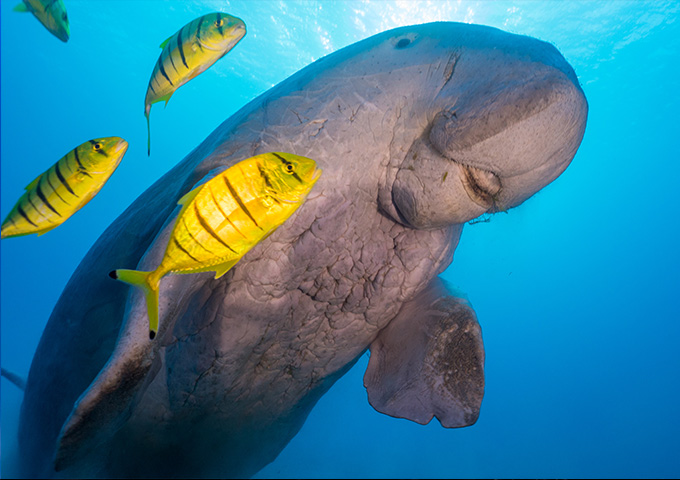
Dugongs
The graceful dugong, or sea cows as they are sometimes called, graze on seagrass which forms meadows in sheltered coastal waters. Early explorers and sailors believed that they were mermaids because of their streamlined bodies and the large teats at the base of the flippers of the female dugong. The status of dugong populations in an area can be used as an indicator of general ecosystem health. Dugongs are more closely related to elephants than to other marine mammals such as whales and dolphins, but their closest living aquatic relatives are the manatees.Dolphins
The bottle nose dolphin can be seen all year round in the Whitsundays, these intelligent animals are playful and family oriented marine mammals that never fail to delight. Dolphins feed off small fish with occasional squid, crab, shrimp and other small animals. They work in a school to maximise the harvest, surrounding their prey and hearding them just like a sheep dog working their flock. Dolphins search for prey primarily using echolocation, which is similar to sonar. They emit clicking sounds and listen for the return echo to determine the location and shape of nearby items. Dolphins also use this sound for communication, including squeaks and whistles, emitted from the blowhole and also by body language, such as leaping from the water or slapping their tails on the surface. These are just a few of the locals you are most likely to meet on your charter holiday cruising around the Whitsunday Islands.
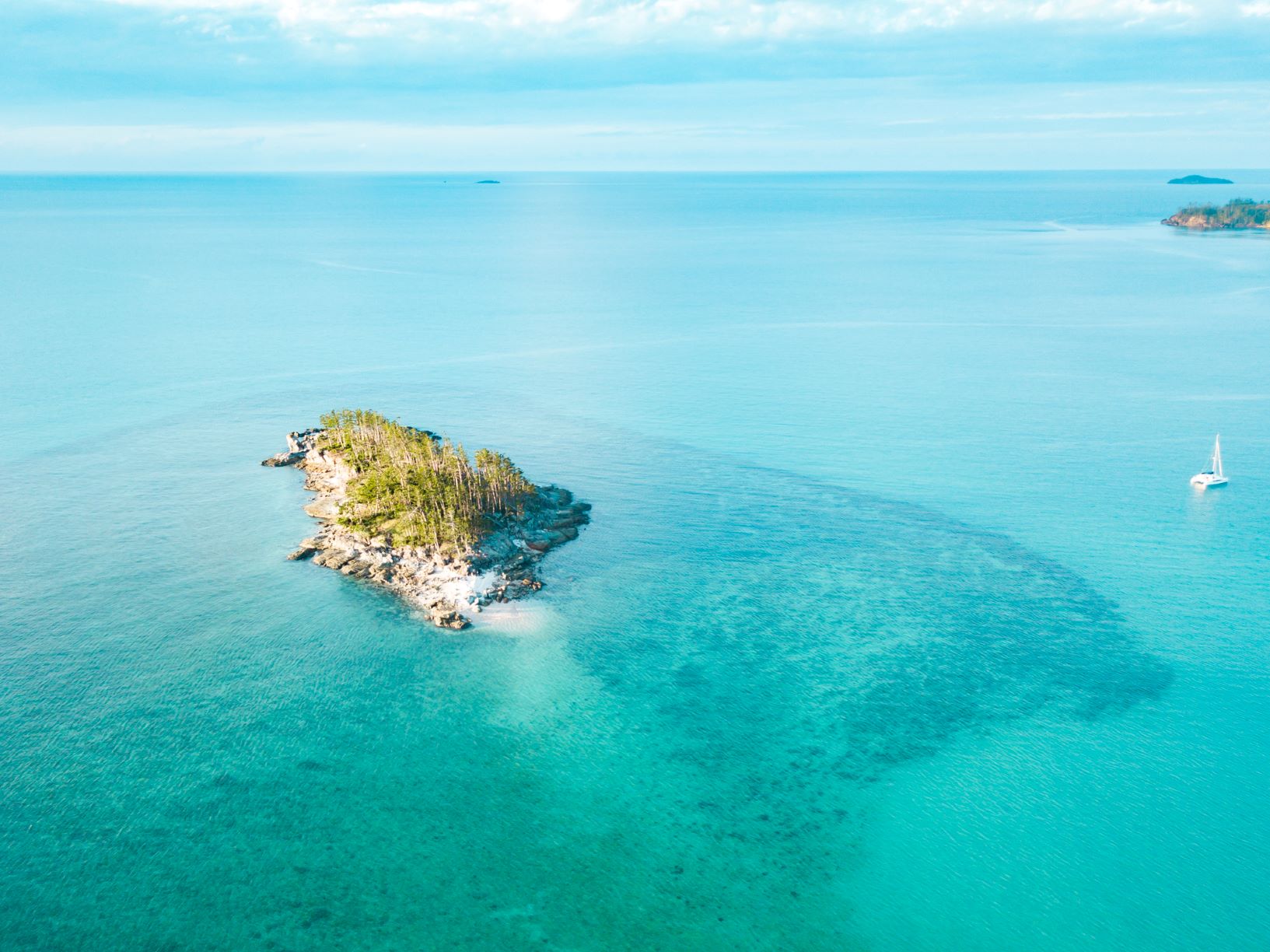
Great Barrier Reef
The Great Barrier Reef is one of Australia’s most incredible natural wonders blessed with the outstanding beauty of the world’s largest coral reef stretching some 2300 km. The reef is teaming with marine life and comprises of over 3000 individual reef systems and coral cays and hundreds of unique tropical islands with some of the worlds most voted beautiful beaches. Because of its natural beauty, the Great Barrier Reef attracts around 2 million visitors a year.Sharks
Sharks play an important part in the Whitsunday’s ecosystem and act as the largest apex predator in their environment. While sharks are often portrayed as terrifying maneaters, any rare incidences have been a case of mistaken identity. In fact, their role is vital to the health and well-being of this amazing part of the world. They balance ecosystems, keeping species below them in the food chain in check. They are often an indicator of marine health, as their presence is normal and healthy to marine environments. They help ensure species’ diversity by feeding on weak and sick animals as well as keeping species numbers from getting too high. Most of all, their presence continues to ensure the health of the reef. During your sailing charter in the Whitsundays, be mindful, that when we enter the water, we do so at our own risk. The ocean is vast and wild, and it is our responsibility as guests in the shark’s home to arm ourselves with knowledge in order to enjoy this environment safely. It is important if you are heading out on the water that you pay attention to your Briefer/Sail Guide about where and when to enter the water. Never swim at dawn or dusk, and avoid areas that have a muddy bottom and low visibility, or are a well-known fishing area. If you are unsure if the area is safe for swimming, it’s best to avoid entering the water. You may refer to “100 Magic Miles” on board or radio our Office to clarify. There are many safe swimming areas and delightful bays for swimming and snorkelling. “No Swimming” signs have been posted at locations like Cid Harbour, it is very important to heed these warnings. You may also opt to only swim off the shorelines of Whitehaven Beach, or in the clear water bays such as Border Island etc or take advantage of other water-based activities available, such as stand up paddleboards and kayaks. See our current recommendations for Shark SafetyWhitetip Reef Shark
This is the most frequently spotted shark in the Whitsunday Islands and is non-aggressive towards humans. They have a slim build, and have a defining white tip on several of their fins. They are agile swimmers and only grow up to 2m, which allows them to swim inside caves and ledges for protection. Although they are nocturnal and hunt at night, lucky snorkelers may spot them during the day. Their diet consists of small bony fish, octopus, crab and lobster and they can live up to 25 years.Blacktip Reef Shark
Distinguished by black markings on the tips of its fins, the blacktip reef shark is the second most frequently spotted shark in the Whitsundays. They are one of the only species of shark that will actually breach the water when hunting, aiming for small fish like sardines, herrings, gropers, rays and even smaller sharks.Wobbegong
‘Wobbegong’ comes from the Aboriginal word for shaggy beard, named for their shaggy appearance. They are bottom dwellers that blend in very easily with their surroundings and can be very hard to spot. Bites from wobbegongs can be nasty and are always inflicted when an unsuspecting diver or snorkeller steps on them, so take extra care when stepping on the ‘sands’ of the reef!Tiger Shark
Named for the striped pattern found on juveniles, tiger sharks are large and are second to the great white in human attacks. They have been known to eat anything and everything, with contents such as books, tires, jewellery, and clothing being found in their stomachs. Fortunately for snorkelers and divers, these guys usually like to stay in the deeper waters, so you are very unlikely to encounter them when you’re snorkelling in the Great Barrier Reef.Bull Shark
Distinguished by heavy body shape, short, bluntly rounded snout and small eyes. Colouration is pale grey, grey-brown to very dark steel-grey above, and creamy-white below. Fins generally have faint dusky edges, but are not strongly marked. In juveniles, the rear edge of caudal fin has a black edge, but this fades with growth. They frequent shallow, Inshore waters, bays, estuaries and riverine freshwater reaches and coastal waters in tropical regions and often stray into brackish and fresh water—all places where humans can be found. In areas where the sharks can’t see very well, they may mistake humans for other prey.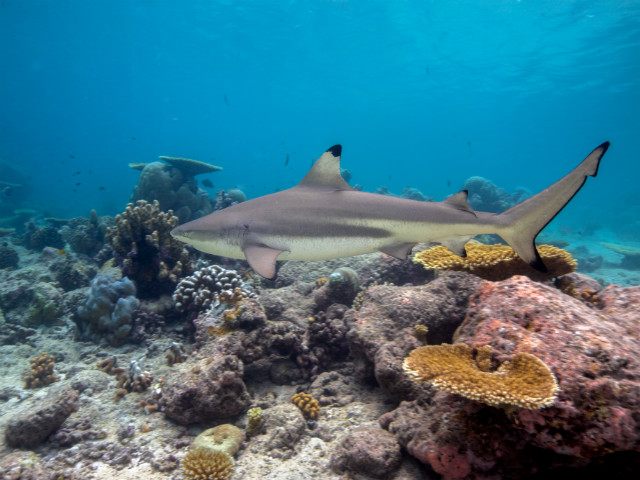
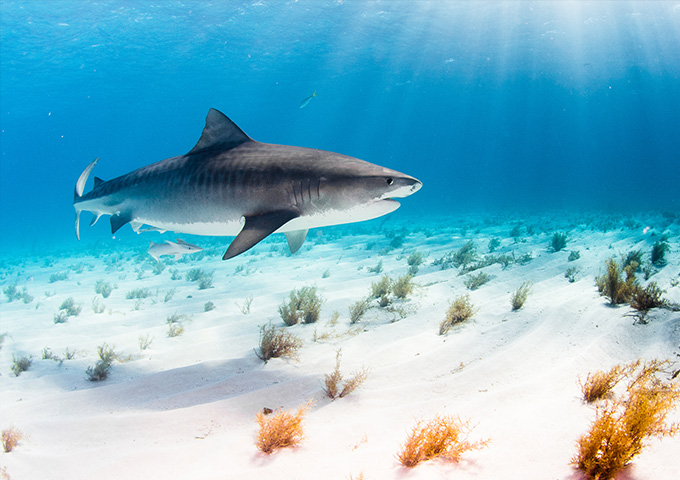
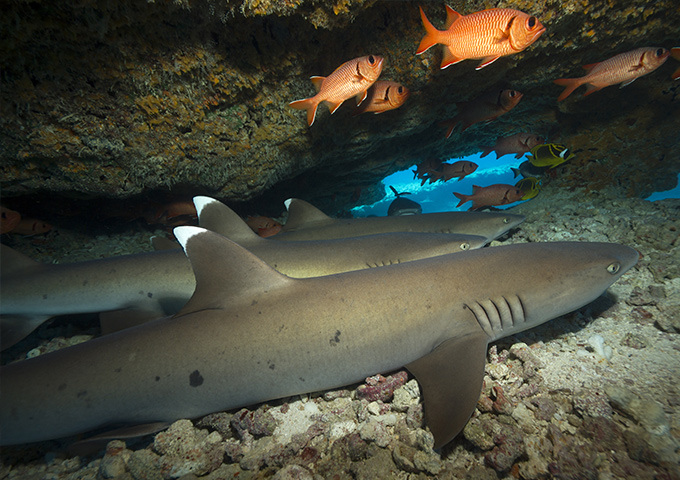
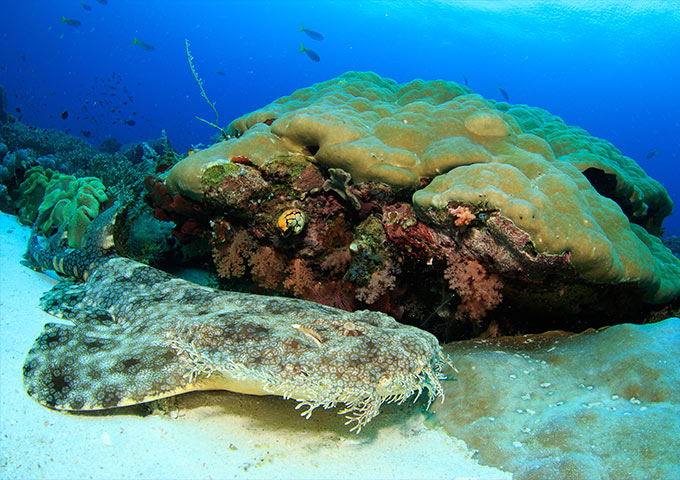

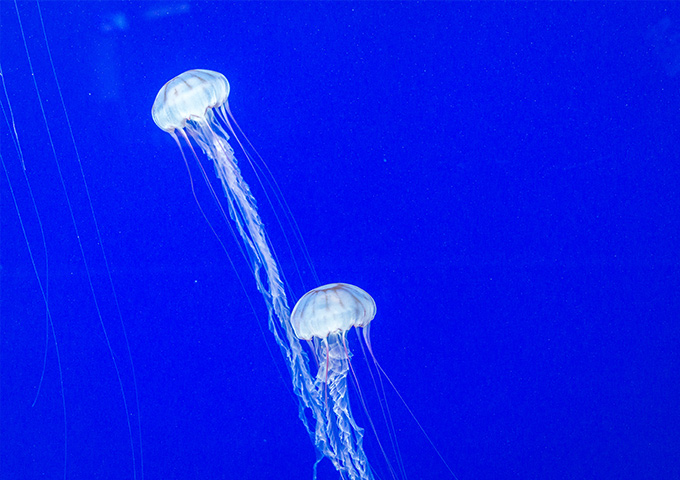
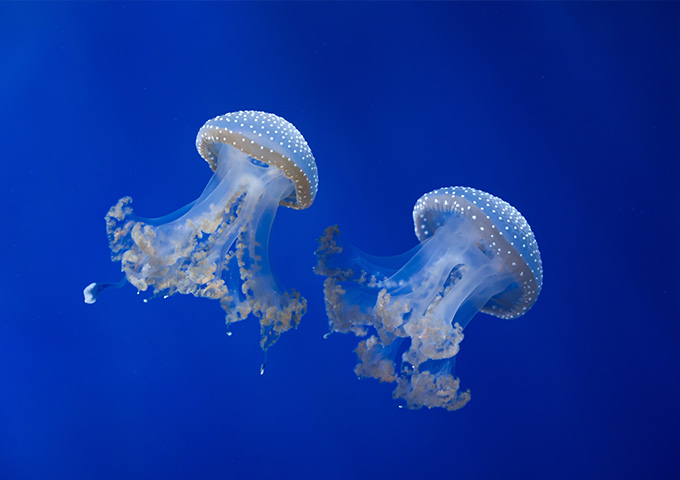
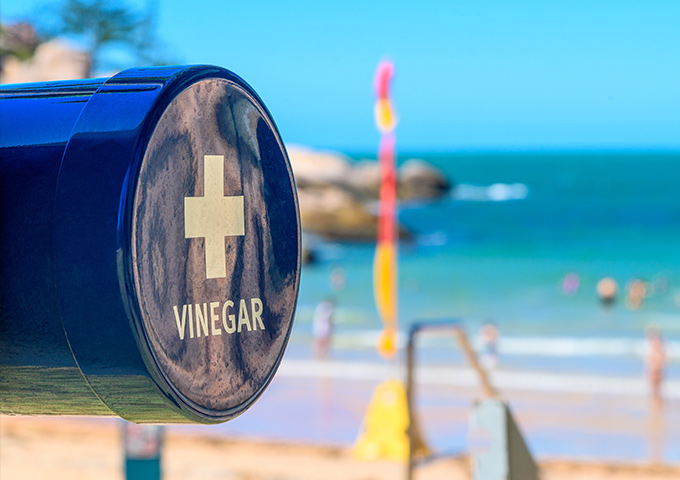
Jellyfish
Marine stingers do not restrict their movement to any particular area and while stinger season is generally between October to May they can be found all year round. Queensland Yacht Charters recommends stinger suits be worn whenever entering the water, particularly during stinger season. A protective suit will also protect the wearer from sunburn and coral scrapes. These comfortable, thin suits do not need to be pre-booked and are available for hire from $30.00 (7-night hire) per suit through the dive shop at the marina.Please see Surf Life Saving Queensland for more information. If you are stung, Whitsunday Regional Council provide vinegar to treat stings at each of the beaches on the Whitsunday Coast and all tour operators should carry vinegar too. Pour vinegar liberally over the affected area and seek medical attention urgently. Call 000 for an ambulance. There are two main types of ‘stingers’ in the area, the Irukandji Jellyfish and the Box Jellyfish. Please see this Irukandji Information Sheet for additional information.Box Jellyfish
The less common Box Jellyfish are typically large, with substantial bodies and numerous tentacles on each corner. Different species reach different sizes, ranging from approximately 10 – 30cm tall. The body is transparent, and usually difficult to see in the water. Box jellyfish stings cause immediate severe pain, often likened to an iron or hot oil burns. The tentacles are often left on the skin, and will cause additional stinging if not neutralized by vinegar. Severe box jellyfish stings will have a “ladder-like” appearance, and will “frost” the skin. Substantial stings covering half of one limb can be fatal. Please note: If you do happen to get stung by one of these “stingers”, do not by any means rub the sting area. Apply vinegar immediately and seek medical attention urgently. Dial 000 for an ambulance. Do not re-enter the water.Irukandji
Irukandji are a group of small jellyfish whose stings can cause serious illness in previously well humans. While caution is necessary, there have only ever been three recorded deaths from Irukandji stings and if prompt medical treatment is received, a full recovery usually occurs within 24 – 48 hours. Irukandjis are rare, but the stings can be life-threatening. It is worth taking some simple precautions so that you can enjoy your holiday with peace of mind. All Irukandji species have small, box-shaped bodies, with a single tentacle on each corner (a total of 4 tentacles). Different species reach different sizes ranging from only 1cm tall. The body is transparent and usually impossible to see in water. The initial sting from most Irukandji species is quite mild, feeling like sea lice or a mosquito bite. There is often no mark, or perhaps small red “goose pimple” marks. Often, Irukandji stings will sweat profusely in the immediate sting region only. Irukandji Information SheetHigh-Risk Conditions
While research is still active in developing accurate prediction methods for Irukandjis, one or more of the following conditions appear to contribute to heightened risk:- Calm water, especially in sheltered bays
- Height of summertime
- Warm water temperature
- Sandy beaches with low wave action
- Proximity to river-mouth
- Open water
- Out of season
- Bad weather eg south-easterly conditions
